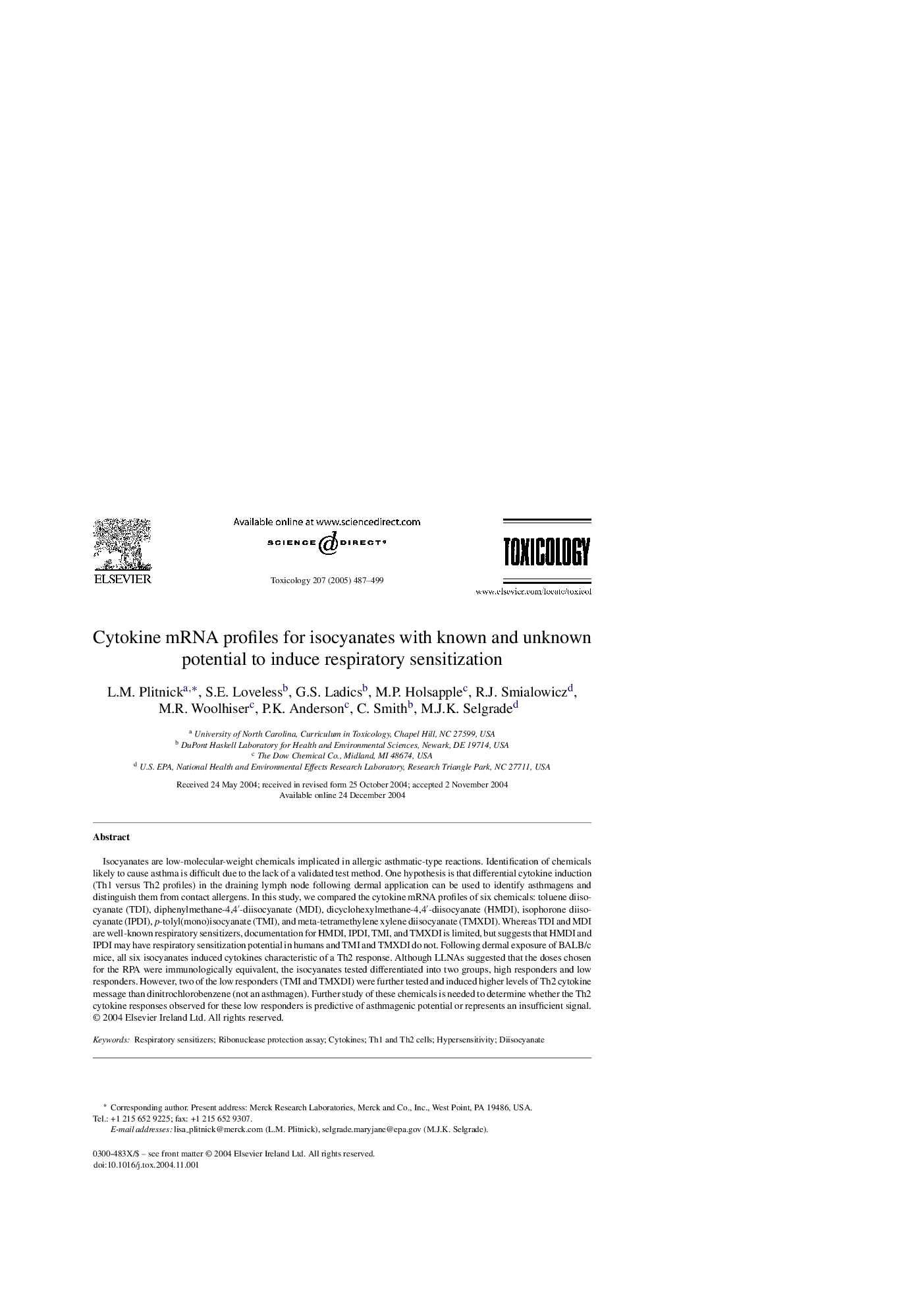| Article ID | Journal | Published Year | Pages | File Type |
|---|---|---|---|---|
| 9034699 | Toxicology | 2005 | 13 Pages |
Abstract
Isocyanates are low-molecular-weight chemicals implicated in allergic asthmatic-type reactions. Identification of chemicals likely to cause asthma is difficult due to the lack of a validated test method. One hypothesis is that differential cytokine induction (Th1 versus Th2 profiles) in the draining lymph node following dermal application can be used to identify asthmagens and distinguish them from contact allergens. In this study, we compared the cytokine mRNA profiles of six chemicals: toluene diisocyanate (TDI), diphenylmethane-4,4â²-diisocyanate (MDI), dicyclohexylmethane-4,4â²-diisocyanate (HMDI), isophorone diisocyanate (IPDI), p-tolyl(mono)isocyanate (TMI), and meta-tetramethylene xylene diisocyanate (TMXDI). Whereas TDI and MDI are well-known respiratory sensitizers, documentation for HMDI, IPDI, TMI, and TMXDI is limited, but suggests that HMDI and IPDI may have respiratory sensitization potential in humans and TMI and TMXDI do not. Following dermal exposure of BALB/c mice, all six isocyanates induced cytokines characteristic of a Th2 response. Although LLNAs suggested that the doses chosen for the RPA were immunologically equivalent, the isocyanates tested differentiated into two groups, high responders and low responders. However, two of the low responders (TMI and TMXDI) were further tested and induced higher levels of Th2 cytokine message than dinitrochlorobenzene (not an asthmagen). Further study of these chemicals is needed to determine whether the Th2 cytokine responses observed for these low responders is predictive of asthmagenic potential or represents an insufficient signal.
Related Topics
Life Sciences
Environmental Science
Health, Toxicology and Mutagenesis
Authors
L.M. Plitnick, S.E. Loveless, G.S. Ladics, M.P. Holsapple, R.J. Smialowicz, M.R. Woolhiser, P.K. Anderson, C. Smith, M.J.K. Selgrade,
